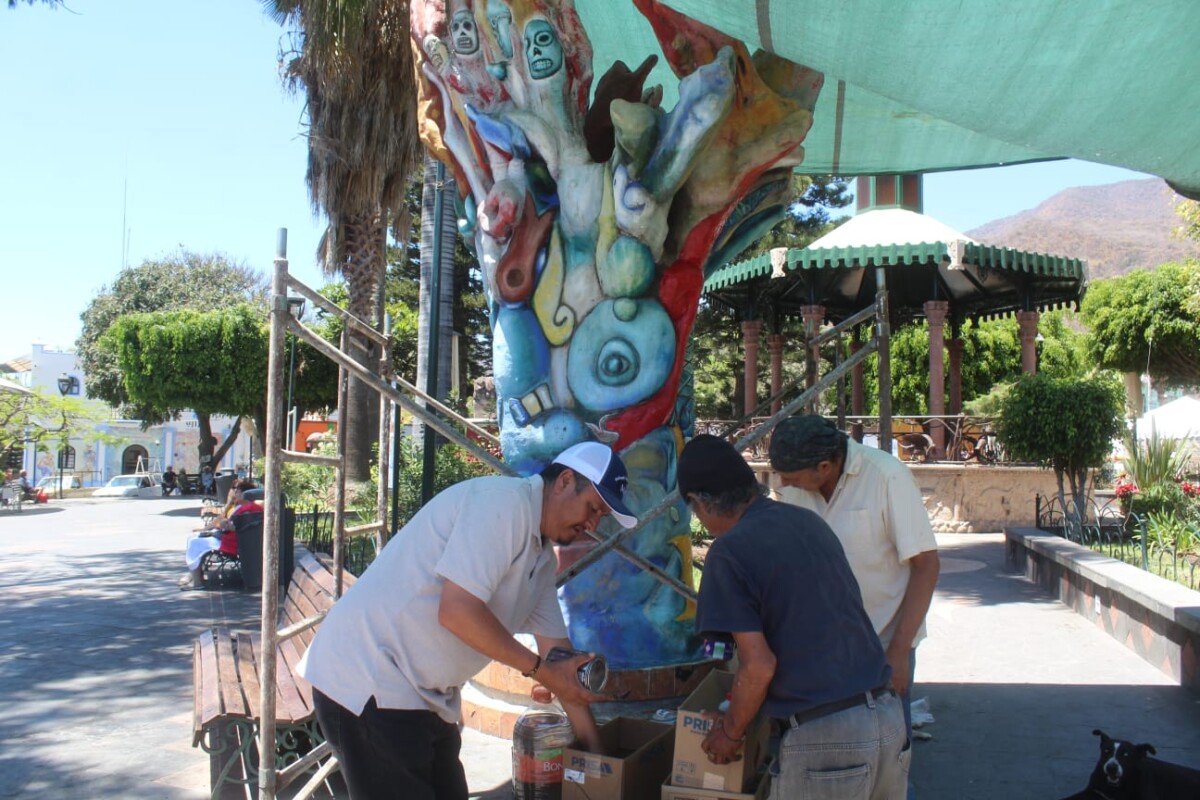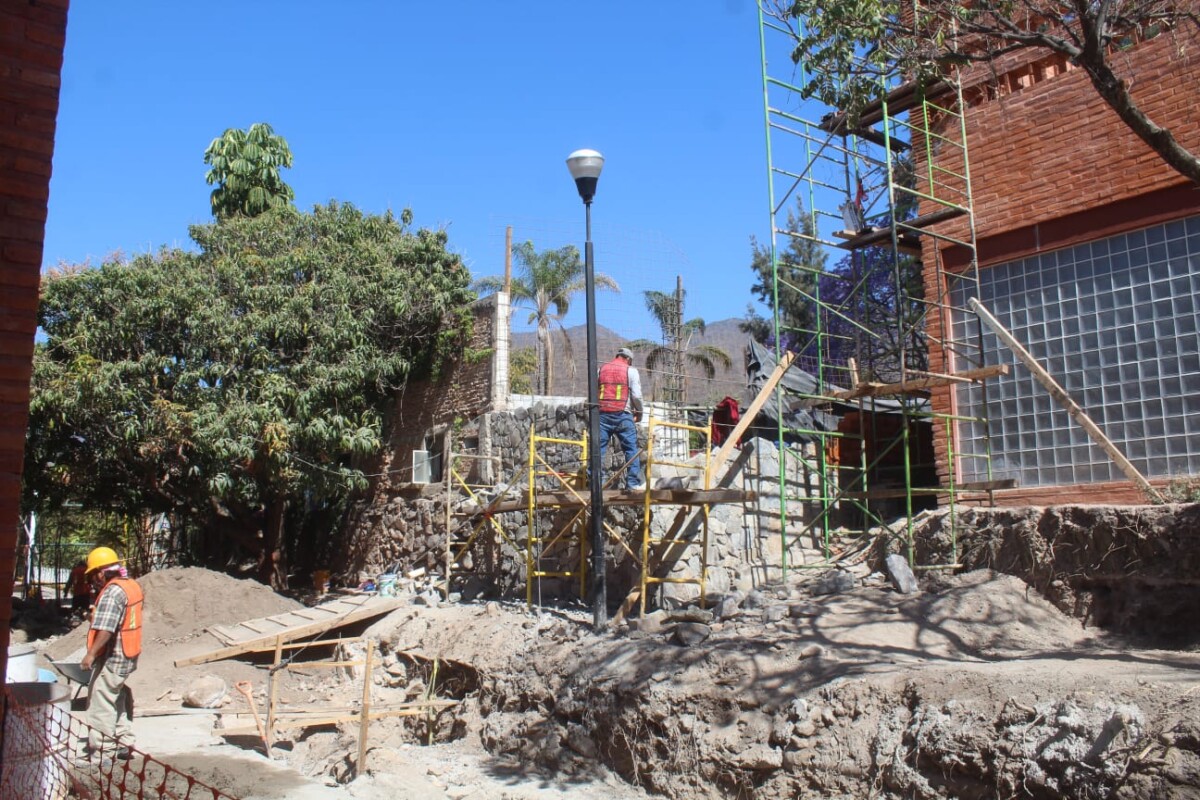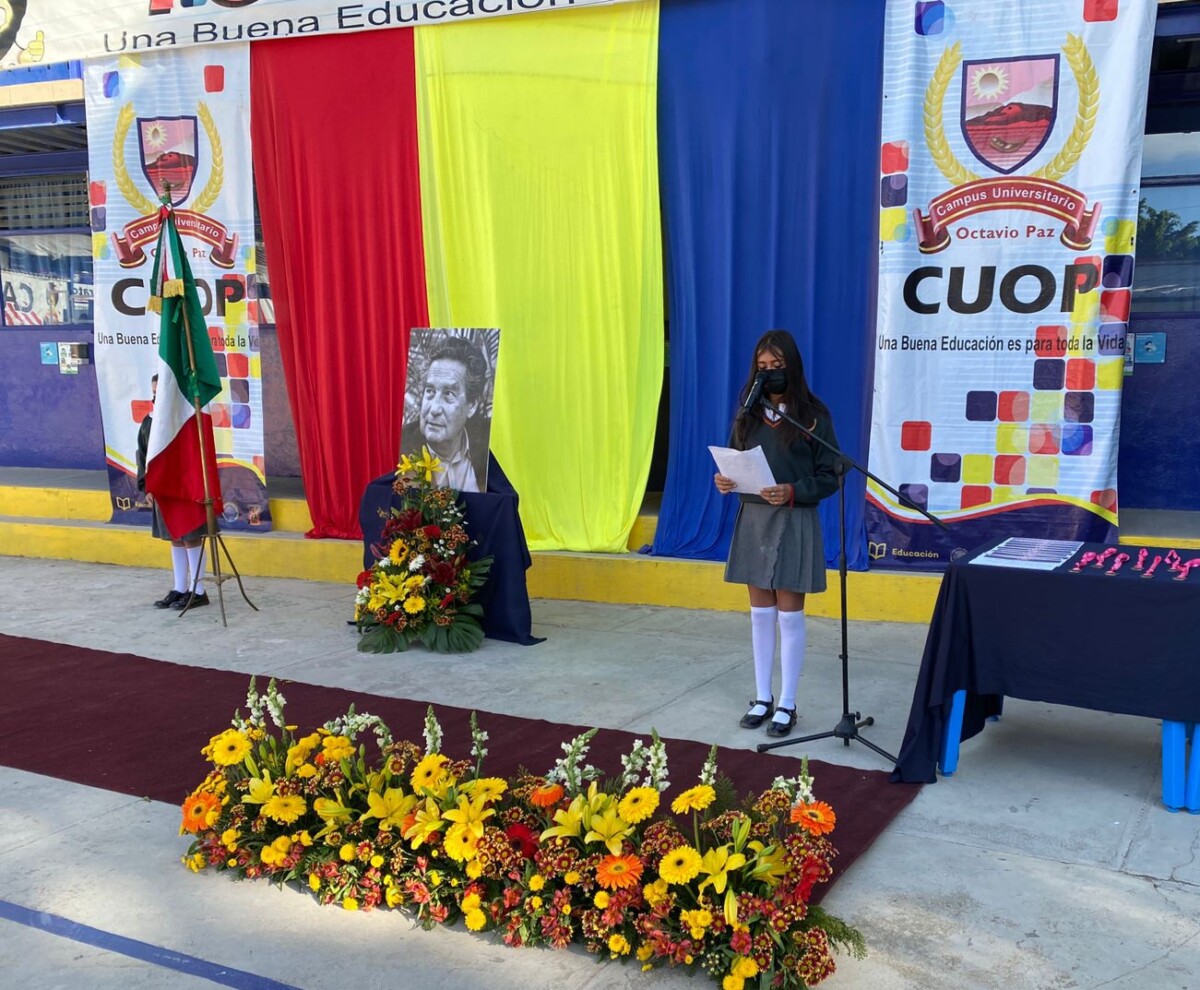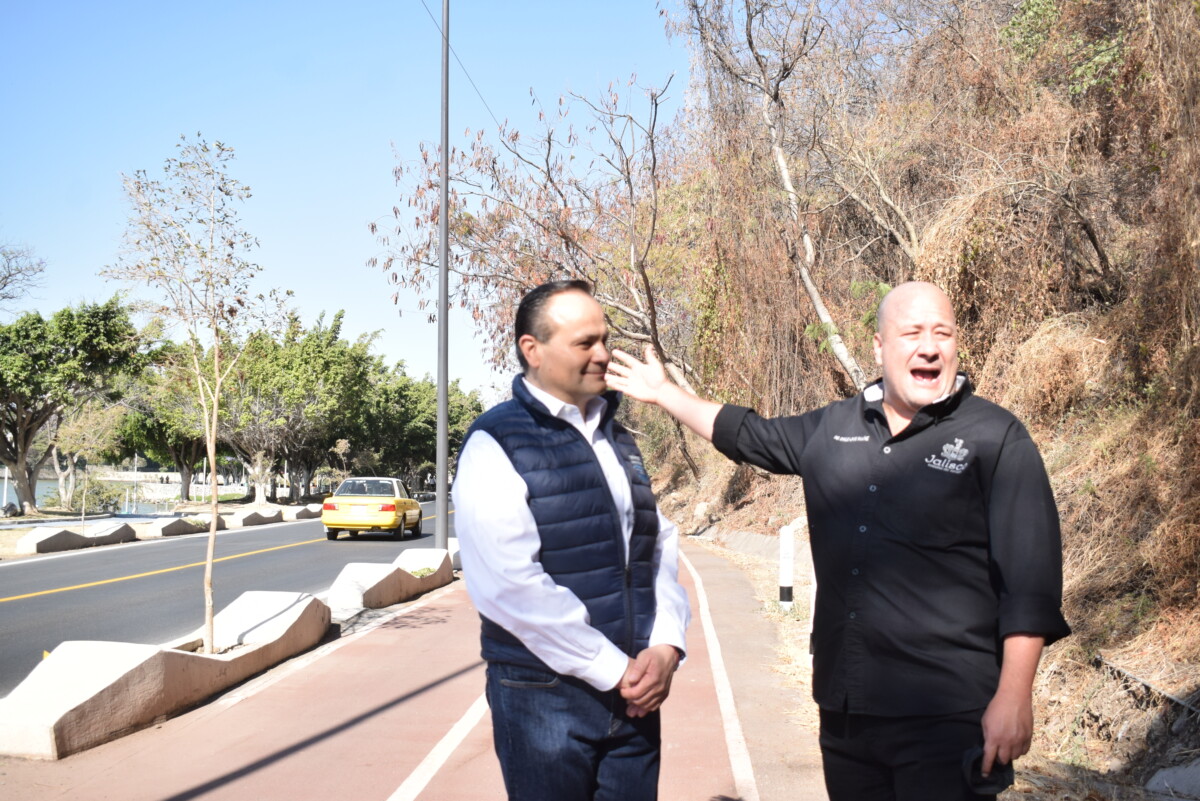Ajijic
Inicia restauración de la Capilla de Nuestra Señora del Rosario
Albañiles realizando los primeros trabajos en el techo de la Capilla del Rosario. Foto: Facebook Capilla de Rosario.
Sofía Medeles.- Esta semana arrancaron los primeros trabajos de restauración en la Capilla de Nuestra Señora del Rosario de Ajijic, ubicada a un costado de la plaza principal.
La intervención es impulsada por el grupo “Sumando Voluntades para la reparación de la Capilla del Rosario”, con la aprobación de obra por parte del Instituto Nacional de Antropología e Historia (INAH).
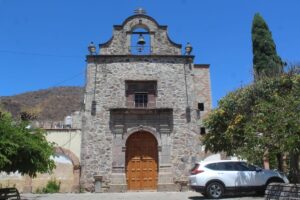
Fachada de la también conocida como “capillita” de Ajijic. Foto: Sofía Medeles.
El arquitecto del proyecto, Josué Ramos, manifestó que las reparaciones comenzarán en el techo del recinto donde, en primera instancia, se removerá el ladrillo de la superficie para comenzar a inyectar o rellenar las grietas que hay en la bóveda y posteriormente, colocar de nuevo el ladrillo e impermeabilizar.
“El INAH nos sugirió utilizar materiales vernáculos de este tipo de construcción, es decir, utilizar el jabón y el alumbre para realizar el impermeabilizado”, comentó el arquitecto.
El grupo “Sumando Voluntades para la reparación de la Capilla del Rosario”, se conformó en el año 2018, motivados por resolver el daño estructural por envejecimiento de la también llamada Capillita, cuyos trabajos deben de ser supervisado por el INAH debido a que el edificio es considerado monumento histórico por datar de principios del siglo XVIII.
Pese a los contratiempos que tuvo el grupo por la pandemia de Covid-19 y el fallecimiento de algunos integrantes; fue con varios eventos como kermeses, subastas de arte y la Carrera del Rosario, que lograron recaudar fondos para iniciar con la restauración, que también incluye la reestructuración de los cimientos del inmueble.
Josué Ramos invitó a los miembros del grupo y a la población en general a la reunión, que se realizará el lunes 4 de abril a las 18:30 horas en la Capillita, para establecer la mesa directiva de Sumando Voluntades.
A mediados del año, concluirá la rehabilitación del Auditorio de la Ribera
Arquitectos y encargados de obra, explicaron los trabajos al Gobernador de Jalisco, Enrique Alfaro Ramírez. Foto: Sofía Medeles.
Sofía Medeles.- Tras supervisar los avances de las obras, el Gobernador del Estado de Jalisco, Enrique Alfaro Ramírez, anunció que la remodelación del Auditorio de la Ribera, ubicado al oriente de Ajijic, concluirá aproximadamente en cuatro meses, es decir, a mediados del año.
Aunque con anterioridad encargados del proyecto habían informado no tener fecha para el inicio de la tercera y última etapa de la rehabilitación, Alfaro Ramírez, aseguró durante su visita el pasado 25 de marzo que deberá estar terminada en cuatro meses y el punto cultural, en funciones.

Fachada del Auditorio de la Ribera. Actualmente, los trabajos se encuentran en la fase final. Foto: Sofía Medeles.
“La última etapa comprende el espacio del ingreso, detalles en el auditorio y ajustes que se tuvieron que hacer al final, pero más que nada, el ingreso, el estanque y el equipamiento”, mencionó el gobernador.
El mandatario estatal señaló que, aunque ya se han invertido 70 millones de pesos en los trabajos realizados hasta el momento, aún falta designar un presupuesto para el equipamiento del recinto.
“Se está haciendo un presupuesto y buscamos involucrar a los empresarios de Chapala que se ofrecieron a ayudar. El presupuesto estará listo en las siguientes semanas y veremos si la iniciativa privada nos echa la mano. Seguro el equipamiento también quedará listo dentro de los cuatro meses que restan”, agregó.
Al final del recorrido por las instalaciones del complejo cultural, el presidente municipal de Chapala, Alejandro de Jesús Aguirre Curiel, agradeció por el espacio, ya que aseveró que será de gran importancia para Ajijic, debido a que en la delegación hay muchos talentos y tradiciones, por lo que será un buen sitio para que se sigan desarrollando.
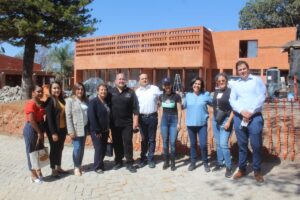
Autoridades municipales de Chapala, acompañaron al gobernador durante la supervisión del recinto.
Durante la visita del gobernador al municipio ribereño también estuvo presente Alejandro Guerrero uno de los arquitectos encargado del proyecto, la titular de la Secretaría de Cultura del estado, Lourdes González Pérez y las diputadas María Dolores “Lolis” López Jara y Claudia Murguía Torres.
La obra de rehabilitación comenzó en el año 2020 y el trabajo es parte de un proyecto estatal denominado “Cultura Cardinal”, que pretende llevar las actividades culturales fuera de la capital de Jalisco. En el auditorio no solo se llevarán a cabo presentaciones artísticas de distintas disciplinas, sino que también se impartirán cursos, además de que se contará con oficinas de la Secretaría de Cultura de Jalisco.
27th consecutive carp fishing tournament held in Ajijic
Omar Alonso González, first place, together with the person in charge of San Antonio Tlayacapan, Gustavo Aguayo; Maximiano Macías Arceo from Ajijic; the councilwoman of Ajijic, Denisse Michelle Ibarra González; and the person in charge of COMUDE Ajijic, Alejandro González.
Sofía Medeles (Ajijic).- On March 27, 36 participants competed to catch the biggest carp, as the Carp Fishing Tournament was held on the shores of Lake Chapala for the 27th consecutive year. From 8:00 a.m. to 2:00 p.m., fishermen from towns such as San Antonio Tlayacapan and Chapala gathered on the beaches of Ajijic, in the area known as «La Crucita» near Nicolas Bravo Street.
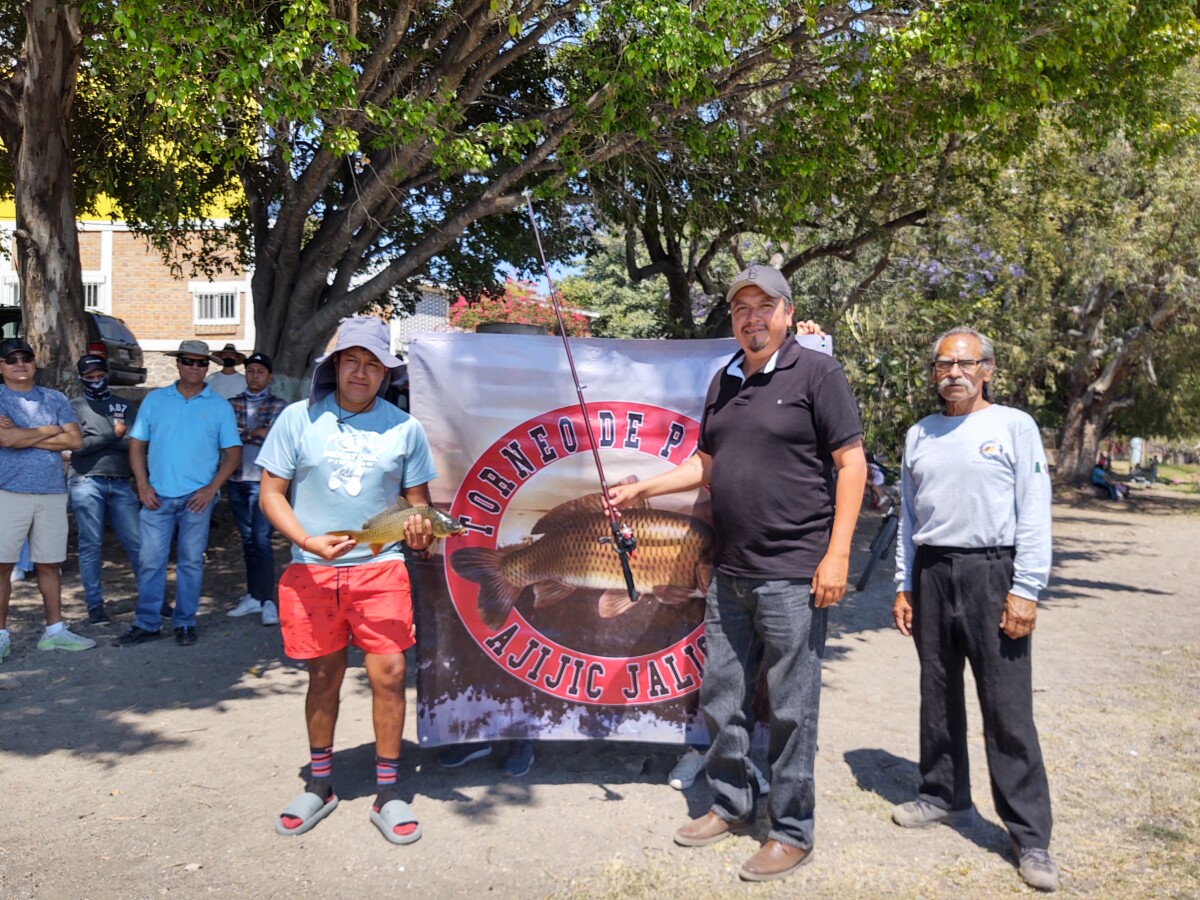
Esteban Barajas Gutiérrez, with Maximiano Macías Arceo and Arturo Gutiérrez.
Event organizer Arturo Gutiérrez, who is in charge of tournament logistics, commented that this competition, unlike other tournaments, is only for carp fishing and has a standard size for the winning fish, which is 35 centimeters (13.7 inches). Prizes are awarded to the three largest fish, which are usually eaten after the event.
«It’s a tradition of the town, I get the prizes, beer for the participants, logos, etc. This event is more than anything else for socializing, it is not a business, I really enjoy being here, for the pleasure of socializing and fishing,» Arturo said.
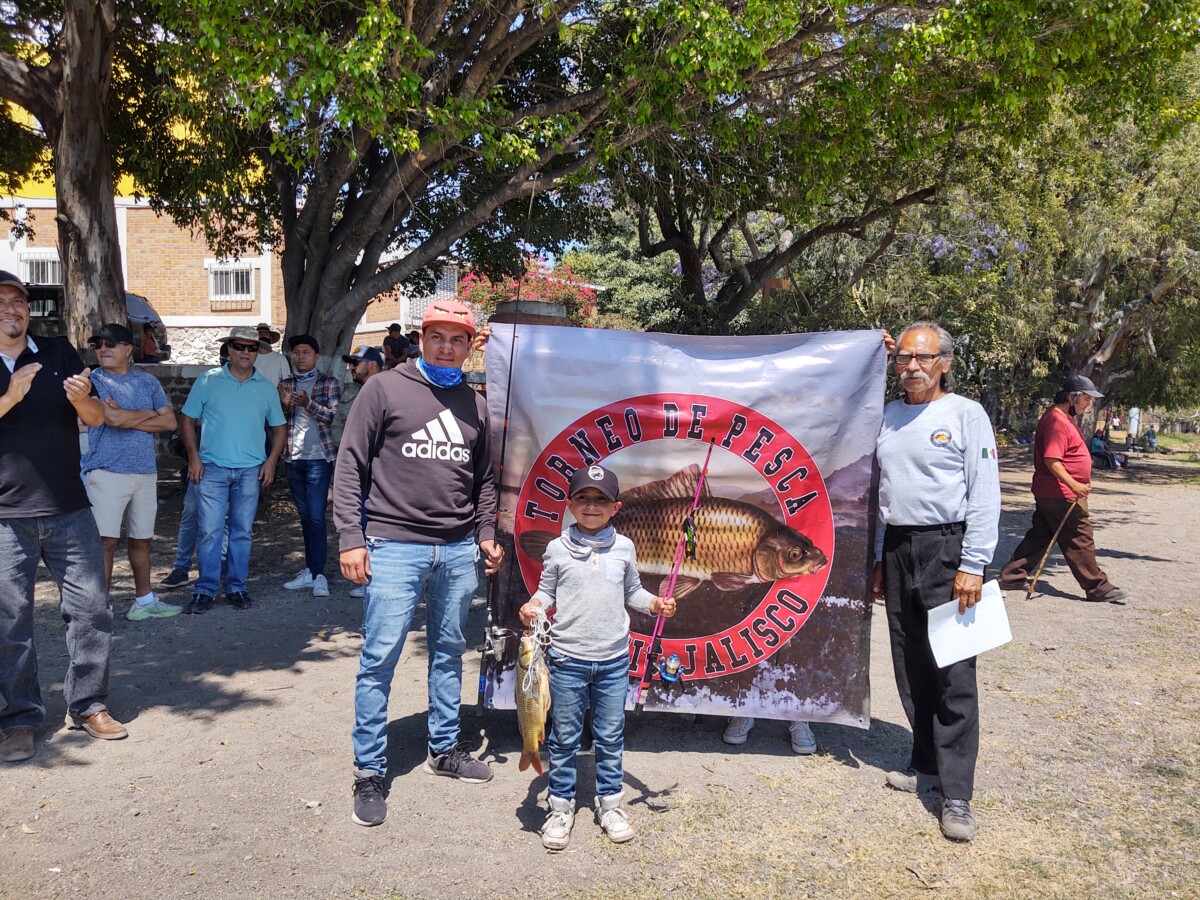
Omar Alonso González with Arturo Gutiérrez.
Arturo also noted that the event passed without incident, except for a few problems with the abandoned nets that are found a few meters from the shore of the lake, that caused the rods to get stuck and damaged.
The winners were: Ricardo Barajas Gutiérrez in first place; Esteban Barajas Gutiérrez in second place; and Omar Alonso González in third place.
Translated by MaryAnne Marble
Ajijic plaza gets touch up before Easter vacation
Painter Antonio López Vega and acting delegate Maximiano Macías Arceo, during the maintenance of the sculpture «Tlaloc». Photo: Sofía Medeles.
Sofia Medeles (Ajijic).- This week work began on the beautification of the main square of Ajijic prior to the Easter vacation when a large influx of visitors is expected.
Acting Delegate Maximiano Macias Arceo confirmed that April tourism season, including the events organized by the group Passion of Christ, such as the Kermes to support the sick of the population, will draw big crowds and the plaza will be ready for them.
«A large tourist presence is expected for these Easter vacations, so we want the main plaza to be in the best possible condition. All will bring visitors from Ajijic as well as tourists.»
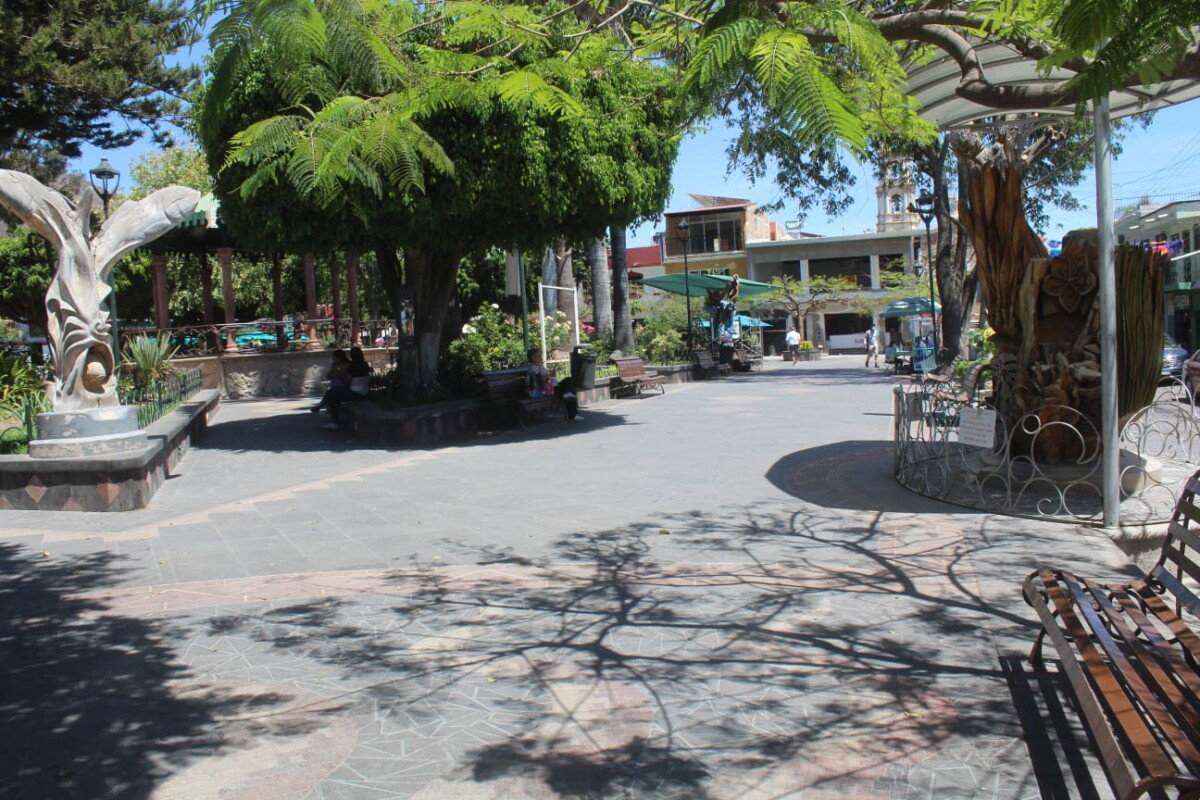
The main plaza of Ajijic is beautified before the April vacations. Photo: Sofia Medeles.
Macías Arceo noted that the work consists of maintenance for the four sculptures in the space, the retouching of the painting of the roof of the kiosk and the cleaning of the terrace and the sides of the planters.
The artists themselves will work on their own sculptures, of which two were created by Antonio López Vega, one by Ricardo González González and one by Estela Hidalgo. The necessary materials will be provided.
López Vega has already started work on his sculptures. One is located in front of the cultural center and the other on Parroquia Street. The painter from Ajijic explains: «The first one, Michi-Cihualli, has been in the plaza for approximately ten years. It was varnished with linseed oil and has gone two years without maintenance. The «Tláloc» is seven years old, and also two years without maintenance. It was originally made of mango root, but the wood rotted and now it is a fiberglass mold; this one will only be painted.»
López Vega invited the public to visit the delegation building on the plaza if they want to support the restoration work with donations.
Translated by Elisabeth Shields
Aurelia Flores Kindergarten entrance to be finished by the end of April
The new entrance to Jardín de Niños Aurelia Flores will be a corridor located between the CETAC high school and the future offices of the Secretaría de Cultura. Photo: Sofía Medeles.
Sofía Medeles (Ajijic).- During his visit to Ajijic on March 25, the Governor of Jalisco, Enrique Alfaro Ramírez, said that it will take approximately one month to provide an entrance to the Aurelia Flores Kindergarten, which was blocked by the remodeling of the Auditorio de la Ribera.
This new entrance consists of a corridor between the Ajijic campus of the Center for Technological Studies in Continental Waters (CETAC) and the building where the offices of the Ministry of Culture will be located. Previously, the entrance to the kindergarten was through the same access as the auditorium.
«I asked them to speed up the work so that the children would not be at risk, because it is under construction. We have already started to free the passage, only the floor needs to be done. I hope that in a month it will be ready and working properly,» said Governor Alfaro Ramirez.
The director of the parents’ committee, Lucia Padilla, advised that they have not been informed about the conclusion of the work being done for this new access to the preschool, in addition they had hoped that the entrance would be a little bigger.
«We wanted to ask for a slightly larger entrance, at least two meters, but we could not talk to the architect and the entrance was left at approximately one meter and 40 centimeters. We have not been told when the work will be finished, or anything else,» she commented.
Previously, several parents complained that, since the construction of the auditorium was in progress, the access through the main door of the auditorium was closed for the safety of the children. The problem has existed since the beginning of on-site classes in August 2021. The parents pointed out that the provisional entrance, which was through the Cruz Azul sports field, was uncomfortable for them and the children, especially in rainy weather and that the work did not seem to be progressing on an entrance exclusively for the students of the school.
In addition, the parents pointed out the poor condition of the classrooms, bathrooms and open spaces of the kindergarten after the pandemic.
Translated by Christalle Dalsted
Octavio Paz’s 108th birthday celebrated with cultural activities
CUOP celebrated the birthday of Octavio Paz with biographies and reading of poems by the writer who gave his name to the educational institution.
Editor. With sports and cultural activities, the students of the Octavio Paz University Campus (CUOP) commemorated the 108th birthday of the Mexican poet and writer who gave his name to the campus located in Ajijic.

Elizabeth Gutiérrez, Rector of CUOP, thanked and congratulated all the participants in the event.
The event, held on March 31, began with the honoring of the national flag under the custody of the elementary school escort. Following this, aspects of the poet’s life were narrated by high school students, while the writer himself was brought to life by the elementary age students.
In addition, the youngest students of CUOP, nursery and preschool students, released balloons symbolizing the eternity of his work.
The high school participated with the interpretation of the poem «Otoño» (Autumn), which was presented in Spanish and English.

During the tribute, the Mexican writer was brought to life thanks to the presentations of elementary school students.
Students taking part in the curriculum of the University of Guadalajara (UdeG) read aloud the story «El Ramo Azul,» which concluded with an oral tour of phrases of the poet’s work. The ceremony continued with the presentation of awards to students who participated in the LIMATEJ mathematics tournament, organized by the Ministry of Education of Jalisco (SEJ), as well as to the students who won first and second place.

The youngest students of CUOP, nursery and preschool students, carried out a balloon release.
Awards were given to the teachers’ team that won the volleyball tournament a few days prior to the celebration, and uniforms were given to the men’s and women’s high school volleyball teams. The high school students won third place in volleyball at the municipal level.
To conclude the event, Mrs. Elizabeth Gutiérrez, Rector of CUOP, thanked and congratulated all the participants in the event, inviting them to continue their hard work and reaping good results in both academics and sports.
Translated by Rebecca Zittle
Restoration begins on historical Chapel of Our Lady of the Rosary with support from Sumando Voluntades
Masons working on the roof of the Chapel of the Rosary. Photo: Facebook Capilla de Rosario.
Sofía Medeles (Ajijic).- This week the first restoration project was started in the Chapel of Our Lady of the Rosary of Ajijic, located next to the main square, thanks to pressure from Sumando Voluntades para la reparación de la Capilla del Rosario.
The restoration has been promoted by the group «Sumando Voluntades para la reparación de la Capilla del Rosario» (Summoning Volunteers for the repair of the Chapel of the Rosary), with the approval of the work by the National Institute of Anthropology and History (INAH).
The architect of the project, Josué Ramos, said that the repairs will begin on the roof of the building where the brick will be removed from the surface to begin to fill the cracks that exist in the vaulted ceiling. Later the brick will be replaced and waterproofed.
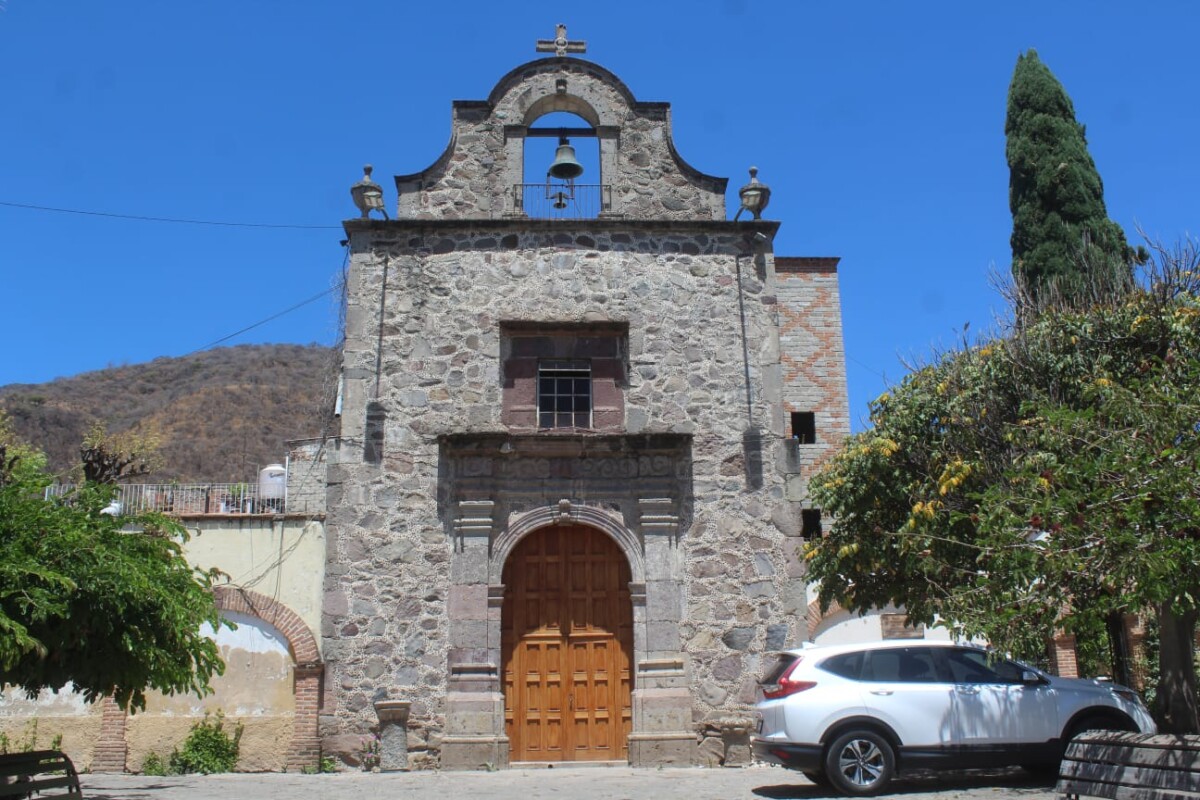
Facade of the church also known as the «little chapel» of Ajijic. Photo: Sofía Medeles.
«The INAH suggested us to use traditional materials of this type of construction, such as soap and alum to make the waterproofing,» commented the architect. The building’s foundation will also be restructured.
The group «Sumando Voluntades para la reparación de la Capilla del Rosario,» was formed in 2018, to solve the structural damage due to the aging of the little chapel, whose restoration must be supervised by INAH because the building is considered a historical monument, dating from the early eighteenth century.
In spite of the setbacks that the group had due to the Covid-19 pandemic and the death of some members, it has held several events such as church fairs, art auctions and the Rosary Race to raise funds to begin the restoration.
Josué Ramos invited the members of the group as well as local residents to the meeting to be held on Monday, April 4 at 6:30 p.m. at La Capillita, to establish the board of directors of Sumando Voluntades.
Translated by Kerry Watson
New restaurant at the Ajijic Cultural Center
The tables of the new restaurant can already be seen at the Ajijic Cultural Center. Photo: Sofía Medeles.
Sofía Medeles(Ajijic).- A space on the second floor of the Centro Cultural de Ajijic (CCA), as well as a small part of the terrace in front of the venue, has been rented to install a restaurant.
The administrator of the CCA, Héctor Hinojosa, commented that these permits and the lease were granted by the Municipality of Chapala and that this area on the second floor has been suitable for a restaurant since the building was built, with a bar and a space for kitchen furniture.
«If anyone goes to a gallery, a cultural center or an art space in the city, there is always a space designated for a cafeteria or a soda fountain. When the cultural center was built they planned in the space for this. Anyone who has visited it can see that there was always a space for the kitchen and tables,» said Hinojosa.
The administrator added that they charge 3,500 pesos for the rental of the space and that, in addition, the owner pays for the space in front of the building to place tables, which she is willing to remove when there are events.
Since it started operating last weekend, the restaurant, called «4 Estaciones (4 Seasons),» caused controversy because there were opinions against it, both for the place where it is located and for the tables that were placed outside the CCA. This space has previously had a restaurant in service.
Finally, Héctor invited those who were not in agreement to visit the place to see the quality of the food and to reflect that it is an attraction for tourists to visit the Cultural Center.
Translated by Sandy Britton
Anti-fences movement Back in action!
Approximately 25 people helped in the removal of the cyclone fences. Photo: Sofía Medeles.
Sofía Medeles (Ajijic).– After more than six months of inactivity, the group Pueblos Unidos de la Ribera resumed removing illegal fences on Federal land, this time in the eastern part of Ajijic. The group rallied about 25 people on March 28 to remove two fences that obstructed the passage along the shore of Lake Chapala.
The first fence was located at the end of Donato Guerra street . The group contacted the owner by telephone who claimed to have a concession from the National Water Commission (CONAGUA) and to maintain this fence for the safety of her home. However an agreement was not reached with her to leave the fence intact.
Initially, the woman agreed to show her documents supporting the use of the federal land, but minutes later, she told them that she should not show anything to anyone other than an authority, so the group proceeded to remove the chain-link cyclone fence
During the first demolition, officers of the Chapala police arrived and said that only a report would be made of the action. However, several activists pointed out that they were asked to identify themselves and have their faces photographed. They complained that they felt intimidated by the officers because they were carrying weapons although no weapons were drawn at any time.
Later, the protestors moved further to the east of the town, at the top of Revolucion Street, where a farm under construction had been fenced almost to the edge of the lake. The chain-link was quickly removed, however, the next day it was put up again.

A citizen on horseback supported them by pulling the cyclone mesh to tear it down. Photo: Sofía Medeles.
After the removal of these invasions of federal property, those gathered talked about other points in Ajijic that have the same situation, agreeing to monitor and re-remove fences in the places that had already been liberated to the west of the delegation, as well as to help people from other towns to replicate the «anti-fencing» movement.
» We miss the times when you could walk from Chapala to Jocotepec along the lake shore. Those times will return, if we all unite for this cause, so that our descendants can enjoy the free beaches, which are everyone’s right,» said a member of Pueblos Unidos de la Ribera.
Last April 1st, the activists met again to support residents of the San Antonio Tlayacapan and then continued on to the Pueblo Mágico.
Pueblos Unidos de la Ribera is a movement that was formed early in August 2021. After three actions in which all kinds of fences were torn down on the eastern beaches, between the area of Tio Domingo and Villa Lucerna, they decided to demonstrate at the offices of CONAGUA in Guadalajara.
Although the agency «gave in» and promised to be more attentive to the invasions by deploying more inspectors, in addition to indicating that they were not committing a crime by removing the obstructions, to date, CONAGUA has ignored the agreements.
Translated by Patrick O’Heffernan.
Governor of Jalisco announces investment of 213 million pesos for four projects in Chapala
Jalisco Governor Enrique Alfaro Ramírez together with Chapala President Alejandro de Jesús Aguirre Curiel during the dedication of the 16 kilometers of bicycle lanes in Chapala, in front of La Milagrosa park, at the entrance to the municipal capital. Photo: Jazmín Stengel.
Jazmín Stengel(Chapala).- Jalisco governor Enrique Alfaro Ramírez announced an investment of more than 213 million pesos for four projects during his working tour of Chapala on March 25, 2022. He also inaugurated the Chapala – Jocotepec bike path, toured the 63.32 million pesos rehabilitation of the Auditorio de la Ribera and promised funds for the rehabilitation of the Santa Cruz de la Soledad highway to Ixtlahuacán de los Membrillos.
During his tour he announced the upgrades to Francisco I. Madero Avenue in the municipal capital and, and the Telesecundaria ‘Guadalupe Victoria’ school in Santa Cruz de la Soledad, and more facilities for the Instituto Tecnológico Superior Mario Molina’ campus.
The Instituto Tecnológico Superior will receive 40 million pesos to build 18 new, fully equipped classrooms, multi-purpose rooms and a library. In addition, Governor Alfaro promised to have the Jalisco High Speed Internet Network ready in the next three weeks. This network will also be implemented at the ‘Guadalupe Victoria’ high school.
During his visit to the Telesecundaria in Santa Cruz de la Soledad, the governor said he had spent $12.9 million pesos on the new infrastructure and promised those present to be able to inaugurate the new classroom modules.
Governor Alfaro Ramírez inaugurated the 16 kilometers of bicycle lanes that were built in the municipality of Chapala as part of the state program MiBici. The work that began in 2019, was carried out in two stages with a complementary project that had a cost of 87 million pesos.
The bikeway, which starts in the municipal capital of Chapala and ends at the junction of the Jocotepec beltway along 24.3 kilometers, had a total cost of 211 million pesos, said Enrique Alfaro.
The Governor also announced an upgrade to the entrance to Chapala at Francisco I. Madero Avenue, a 900 meter-long project designed in multiple stages to avoid affecting traffic at Chapala’s busiest intersection. He showed a video detailing how the project would look.
The project has three main objectives. The first is to improve the roadway, replacing the current cobblestones with hydraulic cement and renovating the water and sewage networks that run underneath it. The second is to arrange the parking lot in parallel so that cars «no longer back up» along the avenue, thus avoiding traffic mishaps and maintaining two traffic lanes.
Finally, the project will improve the image of the city’s entrance by installing a fountain on the walkway, almost in front of the San Francisco de Asís parish. It will also extend the bicycle path to the boardwalk, turning the avenue into a «shared street», and modernize the existing outdoor furniture and add new trees.
The 17.5 million-peso cost for the first stage has been secured and the work will begin after the Holy Week-Easter vacations. Although no budget for the total work was disclosed, Chapala Mayor Aguirre Curiel estimated a total cost of approximately 80 million pesos.
A percentage of the still unconfirmed budget will be given to the avenue’s merchants so that they can also improve their image by making it more uniform. This work has been delegated to the Chapala City Council to begin the organization and work with merchants. The construction will be managed by the Secretariat of Infrastructure and Public Works of the State (SIOP).
Translated by Patrick O’Heffernan
© 2016. Todos los derechos reservados. Semanario de la Ribera de Chapala



